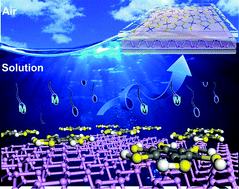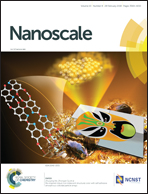On-surface synthesis: a promising strategy toward the encapsulation of air unstable ultra-thin 2D materials†
Abstract
2D black phosphorus (BP) and transition metal chalcogenides (TMCs) have beneficial electronic, optical, and physical properties at the few-layer limit. However, irreversible degradation of exfoliated or chemical vapor deposition-grown ultrathin BP and TMCs like GaSe via oxidation under ambient conditions limits their applications. Herein, the on-surface growth of an oxidation-resistant 2D thin film of a metal coordination polymer is demonstrated by multiscale simulations. We show that the preparation of such heterostructures can be conducted in solution, in which pristine BP and GaSe present better stability than in an air environment. Our calculations reveal that the interaction between the polymer layer and 2D materials is dominated by van der Waals forces; thus, the electronic properties of pristine BP and GaSe are well preserved. Meanwhile, the isolation from oxygen and water can be achieved by monolayer polymers, due to the nature of their close-packed layers. Our facile strategy for enhancing the environmental stability of ultrathin materials is expected to accelerate efforts to implement 2D materials in electronic and optoelectronic applications.



 Please wait while we load your content...
Please wait while we load your content...